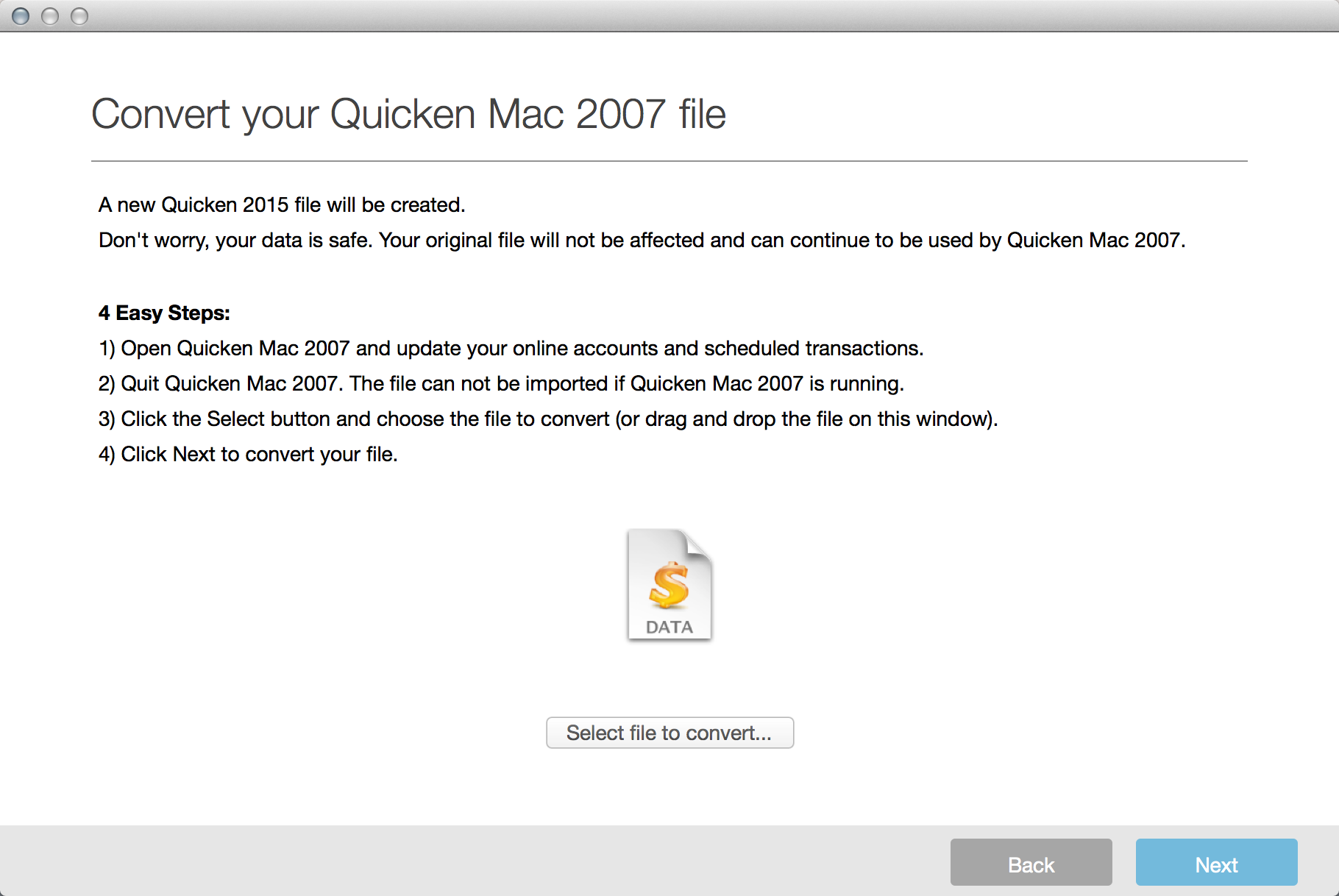- Different (and incompatible) versions of Quicken run on Windows and Macintosh systems. Previous versions ran on DOS 2 and the Apple II. 3 There are several versions of Quicken for Windows, including Quicken Starter, Quicken Deluxe, Quicken Rental Property Manager, Quicken Premier, and Quicken Home & Business, as well as Quicken for Mac. 4 Since 2008, each version has tended to have the.
- Intuit quicken deluxe 2004 free download. Business software downloads - Quicken by Intuit Inc. And many more programs are available for instant and free download.
Quicken 2005 Rating Breakdown 1042 quicken-2005. This is a breakdown of ratings by CrossOver Version. The most recent version is always used on the application overview page. Click on a version to view ranks submitted to it. About the Rating System. Quicken for Mac imports data from Quicken for Windows 2010 or newer, Quicken for Mac 2015 or newer, Quicken for Mac 2007, Quicken Essentials for Mac, Banktivity. 30-day money back guarantee: If you’re not satisfied, return this product to Quicken within 30 days of purchase with your dated receipt for a full refund of the purchase price less.

Microsoft Word is the undisputed king of text-editing apps on the Mac, and similarly, Quicken is virtually without competition when it comes to personal-finance software. Just as Microsoft has resorted to adding extraneous functions to entice users to upgrade periodically, Intuit has also succumbed to releasing new versions that sometimes contribute more to feature bloat than to significantly enhancing users’ productivity. Intuit claims that Quicken for Mac 2006 contains more than 50 improvements based upon user suggestions, but there are only four major new features—Smart Payee, .Mac backup, greater scheduling flexibility, and simplified downloading of multiple accounts. Meanwhile, many long-time annoyances remain.
Four helpful features

Smart Payee, the flagship new feature, offers the ability to batch-rename payees. For example, if a store name in a downloaded transaction appears in all capital letters followed by a cryptic merchant code, such as “WILLIAMSSONOMA01002369,” you can manually change it to “Williams-Sonoma.” Quicken then applies that change to all past and future transactions from the same payee. Everyone benefits—not just the anal-retentive crowd—because this reduces the total number of payees, resulting in more-accurate reports. Unfortunately, creating Smart Payees works differently when downloading transactions from a financial institution (just retype the name of the payee) than it does when browsing a register (click the arrow icon at the right of the payee field and select from the pop-up menu). And I defy anyone to figure out how to tweak the renaming rules without consulting Quicken’s 445-page PDF documentation.
In the wake of Hurricane Katrina, I really appreciate the added ability to automatically back up an encrypted version of my Quicken data file to my iDisk’s Documents folder whenever I close the file (you must subscribe separately to .Mac, of course). Keeping a current offsite backup couldn’t be easier. In this same vein, Intuit’s data recovery service is now free, no longer $200. The upgrade will pay for itself if you ever need to restore or recover a data file, but employing good backup practices with Mac OS X’s existing tools can accomplish the same thing without having to spring for the new version.
Quicken 2006 also features more choices in scheduled transaction frequencies to address common occurrences such as quarterly estimated taxes, biannual property taxes, and Social Security payments that arrive on specific days of each month. If you make heavy use of scheduled transactions, you’ll appreciate how Intuit has revamped this formerly confusing interface to reduce confusion.
The last major new feature is the ability to download data for multiple accounts from a single financial institution, such as separate personal and business checking accounts, or two spouses’ credit card transactions. Downloading all your data in one fell swoop is a definite time-saver, but hardly something to get excited about unless you have lots of accounts.
Quicken 2005 Windows 10
Most of the other improvements are so minor you probably won’t even notice them, and Intuit didn’t bother enumerating them. For example, a colored line in account registers delineates past and future transactions; the check number field now can display as many as eight digits; there’s support for the Check 21 ANSI format; and you can customize or rename transaction types as needed.
Still far from perfect

Despite these small improvements, many long-time quirks remain unaddressed, many of which Intuit says are not problems, but are by design. For example, you can’t allocate transactions to hidden accounts without first showing them; balances aren’t displayed when transferring funds between accounts; the Portfolio window lacks annualized rate of return; you must enter splits for every account in which you hold a company’s shares; entering investment actions is tedious because the default account isn’t the last one used; and you still can’t resize many of the dialogs to take advantage of large screens. One exception is my complaint that stock-price graphs don’t accurately reflect splits, which Intuit confirms, saying it is “actively looking at this,” though it has not promised a fix yet.
Macworld’s buying advice
If you’re still keeping track of your finances with paper registers or Microsoft Excel, Quicken 2006 is a vast improvement and well worth the retail price. You can’t beat its integration with over 1,800 banks, brokerages, and credit card providers. However, if you’re already using last year’s release, only you can tell if the few new features are compelling enough to justify the $60 investment.
[ Owen W. Linzmayer is a San Francisco-based freelance writer who has recently written two Apple Training Series books: Desktop and Portable Systems, 2nd Edition (Peachpit Press, 2005) and Mac OS X Support Essentials, 2nd Edition (Peachpit Press, 2005).]
The new Smart Payee feature makes it quicker and easier to change cryptically named payees to something more legible, once you figure out how the feature works.